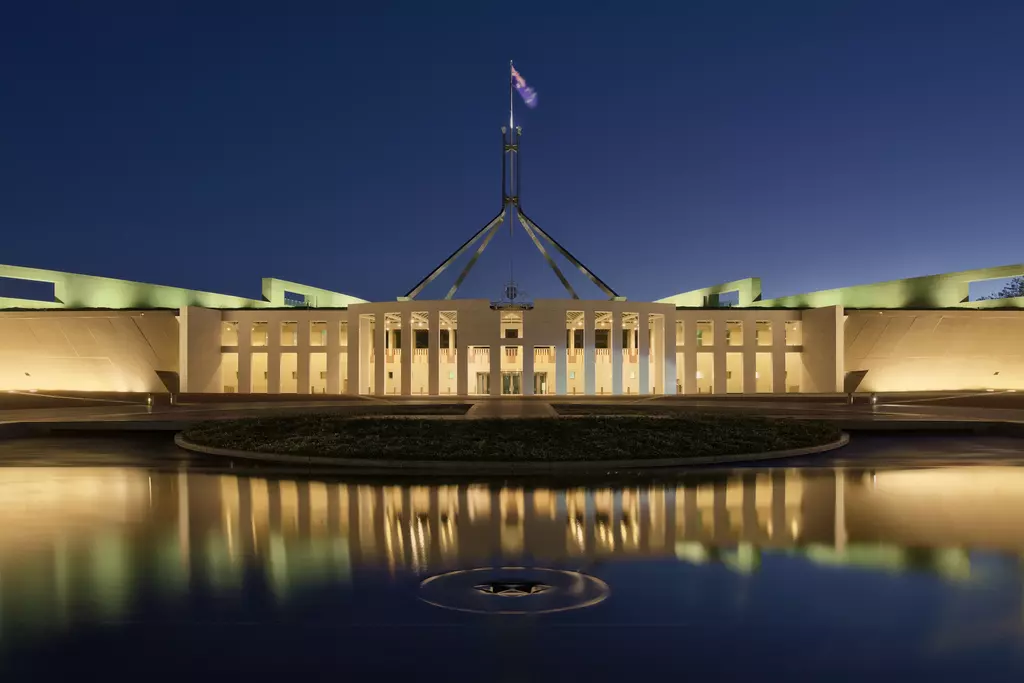Parliament House

- Parliament House in Canberra is the seat of the Australian government, serving as the meeting place for the House of Representatives and the Senate. Opened on May 9, 1988, by Queen Elizabeth II, it replaced the Old Parliament House, which had served as Australia’s federal government headquarters since 1927. Designed by architect Romaldo Giurgola, the building is a masterpiece of modern architecture, blending seamlessly into Capital Hill, with much of its structure built into the landscape. One of its most iconic features is the 81-meter stainless steel flagpole, which flies the Australian flag and can be seen from various points across the city.
- Inside, Parliament House boasts a grand marble foyer and high-ceilinged halls that reflect the elegance and authority of the institution. The Great Hall features an intricate woven tapestry based on an artwork by Arthur Boyd, and the main chambers—the House of Representatives (green chamber) and Senate (red chamber)—are designed to resemble their counterparts in the UK Parliament. The building also houses the Prime Minister’s office, committee rooms, and various public galleries, allowing visitors to observe live debates when Parliament is in session.
- Parliament House is not only a political center but also a major tourist attraction. Visitors can take guided tours, explore interactive exhibits, and walk along the roof, which provides stunning panoramic views of Canberra, Lake Burley Griffin, and the surrounding mountains. The Parliamentary Triangle, where the building is located, also includes national institutions like the National Gallery of Australia and the High Court of Australia, making it a key landmark in the city’s cultural and political landscape.
- As the heart of Australian democracy, Parliament House plays a crucial role in shaping the nation’s policies and laws. It is the venue for major political debates, state visits, and national celebrations such as Australia Day and Anzac Day. The building symbolizes the country’s commitment to democracy and governance, inviting both Australians and international visitors to witness its operations firsthand and appreciate the architectural brilliance of one of the world’s most significant government buildings.
